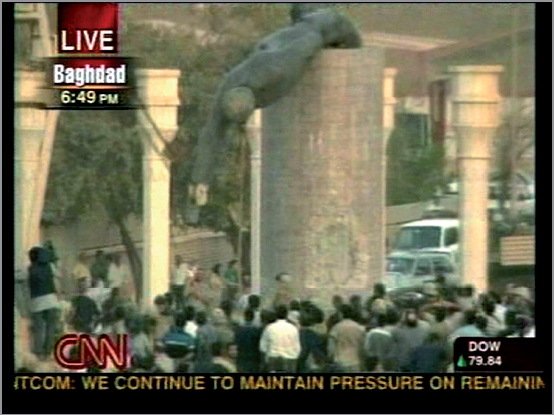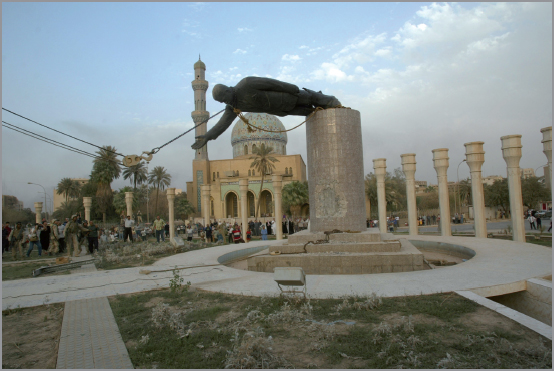MM4-d: Meaning: What effect does the image have on the viewer?
As you develop an interpretation about the meaning of an image on its own or as part of a multimodal piece, be sure to consider genre, features, purpose, and audience together. Although a composer’s choices about the type of image and its features are usually deliberate, they don’t necessarily convey the same meaning to all viewers in all contexts. They may not work the way the composer intended, or they may carry additional meanings the composer didn’t anticipate.
Consider student writer Ian Washburn’s analysis of two news photos showing the toppling of a Saddam Hussein statue in 2003, during the United States’ war with Iraq. In his analysis, Washburn interprets the differences in the images by studying both the perspective and the point of view of each. He also hints at the purpose of the image in his discussion of the initially released photo. Examining static images in this way helps the viewer think carefully about a composer’s message and consider possible meanings.
The two photos tell two different stories about what happened in Firdos Square in Baghdad in April 2003. At the time the event occurred, I was stationed nearby in Baghdad. Major media outlets, including BBC, CNN, Fox News, and others, ran photos like the top image in fig. 1 [see next page]—showing a cheering, chanting, supportive crowd. The US government itself shared some photos from a similar perspective.
Later, however, other photos from the day emerged on the Web, like the bottom image in fig. 1, which some bloggers and commentators used as proof in claiming that the toppling of the statue was a staged “media event.” What is clear in these pictures is that US tanks were stationed at each exit into and out of the area and that the crowd was pushed close to the statue and photos were shot primarily from behind the crowd, to create an illusion of a very big gathering (estimates indicate that about a hundred Iraqi citizens were there for the toppling of the statue).
The event did happen, and the event was important in the war against terror. However, the ways that the photographs were taken and presented tell a different story about how the events happened that day.

